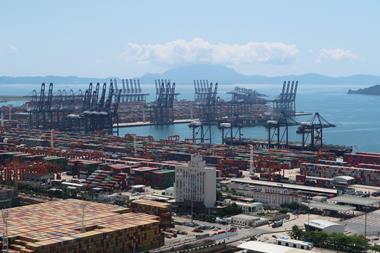Apple, GM and Boeing lead the trend as US-based corporates source suppliers closer to home
The trend towards nearshoring supply chains is happening faster than expected, according to research from Gartner-owned company Capterra.
It found that many US-based corporate giants have already found new suppliers closer to home and have made substantial investments in US manufacturing. Apple nearly doubled the number of suppliers based in the US in 2022 and General Motors and Boeing are investing heavily in manufacturing plants in the US and Mexico.
”Most industry professionals predicted this change would happen very slowly, over five or more years,” it says. “But even the 2022 numbers we see in the data were stronger than those predictions, and 2023 will continue to see a rapid shift to nearby suppliers.”
Apple has also moved some of the manufacturing of its iPhone 14 to India from China in a high-profile example of ‘friend-shoring’. Five percent of iPhone 14 production shifted to the country in 2022 as the company diversifies manufacturing away from China.
By 2025, a quarter of all iPhones produced by Apple could be made in India, according to JP Morgan analysts. The company has been manufacturing iPhones in the southern Indian state of Tamil Nadu since 2017.
88% have plans to onshore
Capterra surveyed 300 supply chain professionals at small to midsize businesses (with 1,000 or fewer employees and an annual revenue of $500 million or less) to learn about the challenges and solutions for navigating the changing industry.
It found that 88% of small and midsize supply chain professionals have plans to switch at least some of their suppliers to ones closer to the US. 45% plan to switch all of them.
The economy is currently the primary concern: 65% of SCM professionals say economic inflation is a top concern going into 2023. Lack of inventory (43%) and economic recession (42%) follow.
Among the benefits noted from near-shoring are:
-
Easier to manage critical situations. The shorter distance to travel and smaller time-zone differences reduces the cost and effort required to visit your suppliers when needed.
-
Financial incentives. Mexico, Canada, and the Central American region offer competitive labour costs and quicker delivery, making them strong contenders to replace overseas manufacturing.
-
Strong existing trade agreements. The US currently has several open trade agreements with nearby countries and over a dozen other agreements with countries that aren’t quite as nearby, including Australia.
-
More resilient transportation routes. The transportation infrastructure across North America allows for less complex transportation of goods, opposed to shipping ports and the perils of sea travel. And as the climate continues to affect transportation, the closer to your customers your product can be throughout the supply chain the better.
-
Fewer cultural disparities. Many suppliers in nearby countries have similar labour, health, and safety laws as the US making it easier to ensure ESG standards are met throughout the value chain.
Downloads
SMBs_are_moving_most_to_all_suppliers_closer_to_US_faster_than_predicted
Image, Size 0.16 mb




















No comments yet